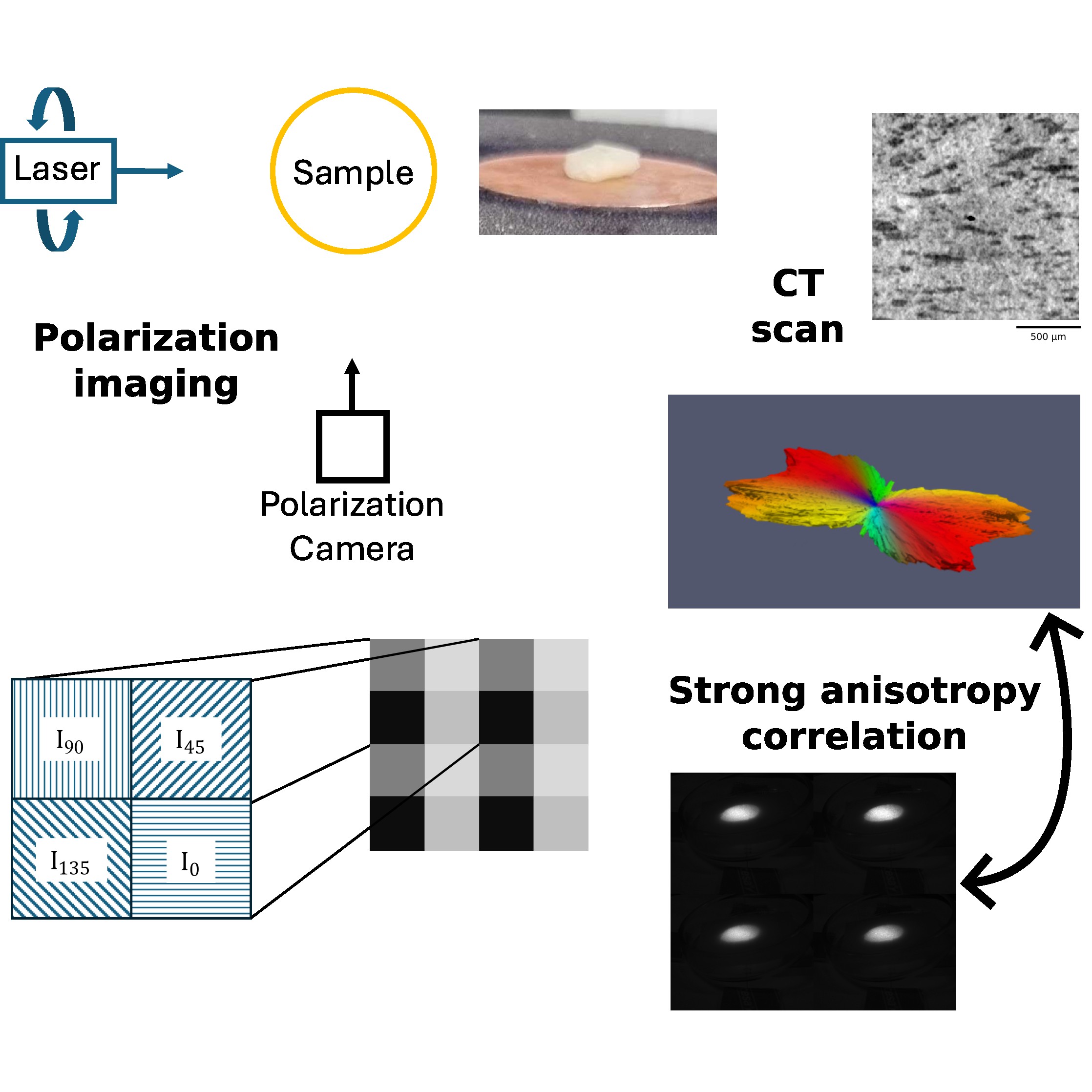
Lezhong Wang1, Pawel Tomasz Pieta1, Siavash Arjomand Bigdeli1, Niels Christian Krieger Lassen2, Anders Nymark Christensen1, Anders Bjorholm Dahl1, and Jeppe Revall Frisvad1,*
1Department of Applied Mathematics and Computer Science, Technical University of Denmark, Richard Petersens Plads, Building 324, 2800 Kongens Lyngby, Denmark
2Videometer, Hørkær 12B, 2730 Herlev, Denmark
*Corresponding author
Quantifying anisotropy in a turbid medium is critical for applications ranging from biomedical diagnostics to food quality assessment. Using a polarization camera and irradiation by a linearly polarized beam, we present a noninvasive method for estimating material anisotropy by analyzing depolarization ratios. To validate our approach, we perform a 3D microstructural analysis of mozzarella cheese samples to obtain ground-truth anisotropy levels using a metric based on structure tensor scale-space analysis of computed tomography (CT) scans. Our experiments with mozzarella samples of different anisotropy levels demonstrate a stronger correlation with CT-derived anisotropy and greater robustness as compared with oblique incidence reflectometry, which is limited by surface artifacts and sensitivity to sample orientation. Our method maintains high accuracy with simpler instrumentation and without sample rotation even when samples exhibit surface variations (non-flatness or texture). This establishes polarization imaging as a robust platform for noninvasive anisotropy characterization with potential applications in industrial quality control and biomedical diagnostics.

 |
Wang, L., Pieta, P. T., Bigdeli, S. A., Lassen, N. C. K., Christensen, A. N., Dahl, A. B., and Frisvad, J. R. Quantitative measurement of the anisotropy of a turbid medium using polarization imaging. Applied Optics 64(22), pp. 6468-6478. August 2025. [abstract] [editor's pick] |